31+ Different Types Of Aloe Plants With Pictures (Identification Guide)
We all know aloe plants for their majestic looking leaves and their extensive health benefits but not so much about how many types of aloe plants are there. Native to North Africa, there are at least 250 species of aloe plants out there.
Whatever the reason is behind your fascination for aloe plants, in this post, we shall cover not just the most common types of aloe but also some notable FAQs about the plant, benefits, and more so, read on.
In this article:
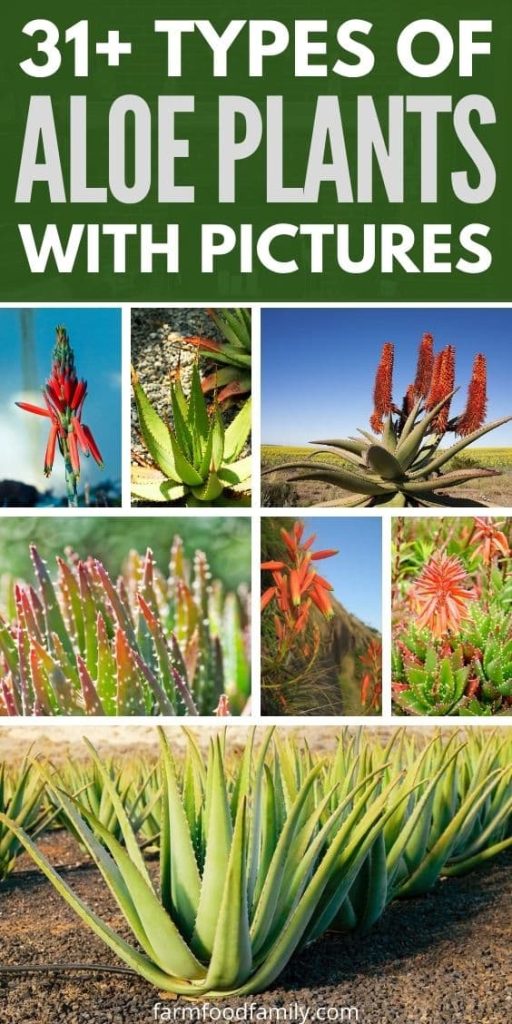
How do I identify my Aloe plant?
Aloe plants are often mistaken with hawthorn, gasteria and agave plants. To easily identify aloe plants, you have to look for the fleshiness and shape of their leaves. This is what sets them apart from its lookalikes.
Aloe leaves are typically triangular in shape and are extra fleshy. Compared to agave and hawthorn, aloes are smaller (although you will find later that there are tall aloes).
Another striking identifier for aloe plants would be their spikes that could range from soft to the touch to wound inducing sharpness. Finally, you can confirm that your plant is an aloe and not an agave by doing the snap test.
If you break the leaf of the aloe, you would see a gush of sticky substance coming from it. This is the substance extracted for herbal supplements, cosmetics, shampoos, and soaps. Agaves do not have this gel.
Types of aloe plants
In general, aloe plants thrive best in full sun and partial shade. There are at least 580 known species of aloe plants around the world and since we cannot sift through them at once, here are some of the most common types of aloe plants that you should know of.
1. African aloe (Aloe africana)
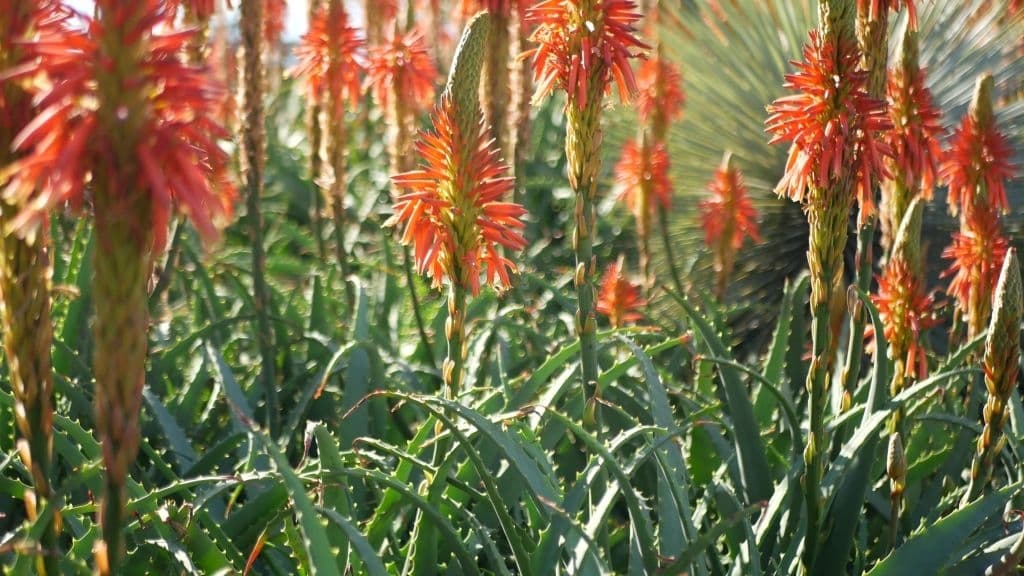
This one is one of the few single-headed varieties of South African aloe varieties, with drooping leaves sprouting from the trunk. It is drought tolerant, reaching a height of 8ft and a width of 4ft.
It blooms orange and yellow flowers from spring to winter. It thrives in water neglect and can tolerate a temperature that is not lower than 25F.
2. Aloe Albiflora

This one is a midget aloe notable for its long and slender leaves with predominantly gray green color and white speckles running down its length.
It is often lined in the Madagascar aloes but its main identifier would be its lily like flowers blooming during early summer.
3. Aloe Principis

This one is another tall aloe that is perfect as an accent plant to winter gardens. Aside from their upright flowers, they also feature red orange spikes during the colder seasons.
It is typically seen in Mediterranean style succulent gardens. It is attractive to bees, butterflies, and hummingbirds.
4. Aloe vera (Aloe barbadensis)
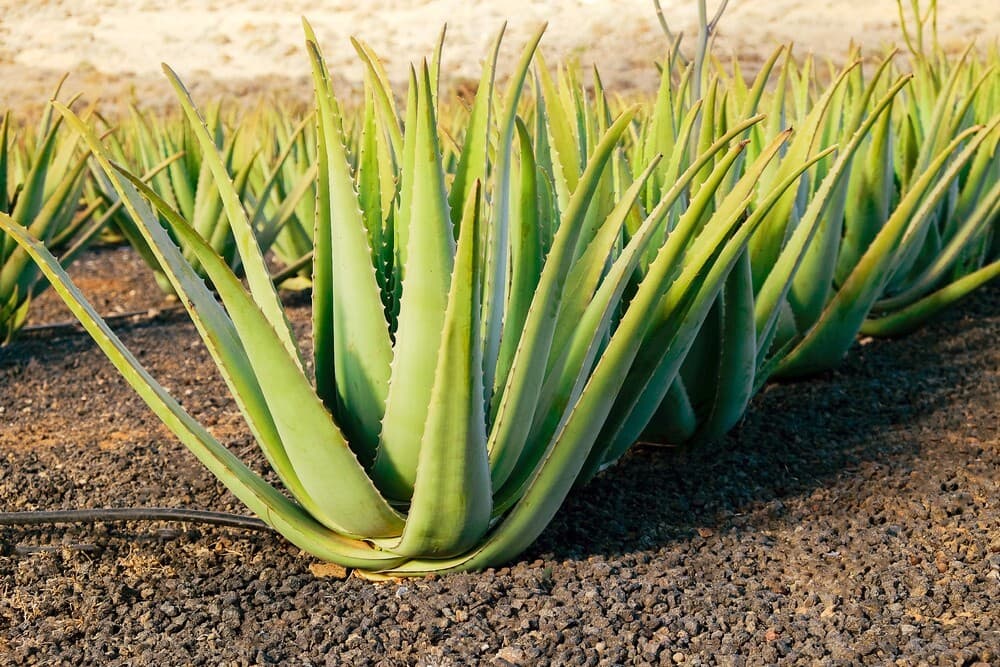
This perhaps, is the most popular among all aloe plants because of its extensive medicinal property. Its gel is extracted for food supplements, skin care products, shampoo, and medicine.
It has high antioxidant and anti-inflammatory content making it a potent solution for treating wounds, scars, even digestive problems and cancer.
5. Arabian Aloe (Aloe rubroviolacea)
This one is a smaller type of aloe and they grow in masses. Its main upside is its total resistance to drought. As such, it is used extensively in garden beds but is also perfect as container plants in decks, patios, and indoors.
It sports beautiful blue green leaves with red lining. When in full sun, the leaves tend to become purple. This one is a disease-resistant aloe and blooms masses of red flowers during winter.
6. Barbados Aloe (Aloe barbadensis)
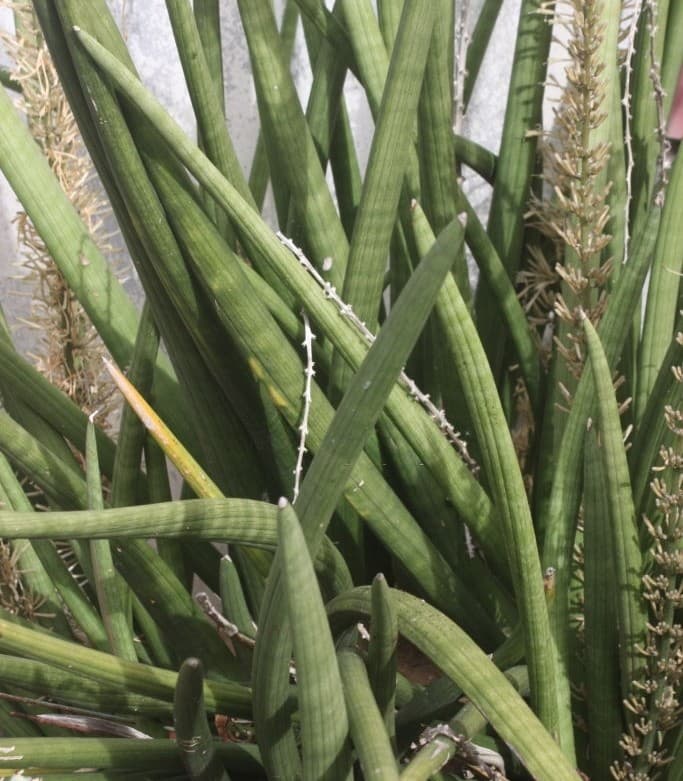
This one is the most popular aloe because of its proven healing effects. This is the one that we see growing in local herbariums, extracted for its gel and used in treating wounds and a lot of hair and skin issues.
It blooms yellow flowers at youth but loses the ability to bloom one as the plant grows older.
7. Cape Aloe (Aloe Ferox)
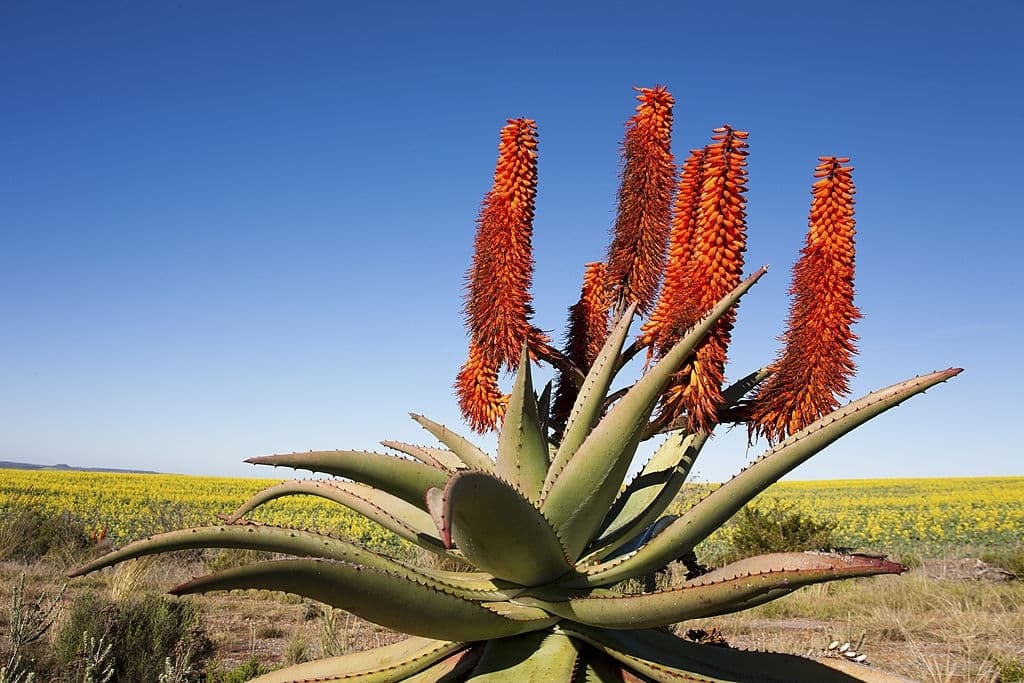
This one is a large aloe, endemic in desert conditions. Each leaf of the cape aloe has spines and lots of teeth running down their length.
They feature long and upright red or orange flowers. Like the Barbados aloe, their gel is also extracted for food supplements and skin care products.
8. Clanwilliam Aloe (Aloe comosa)
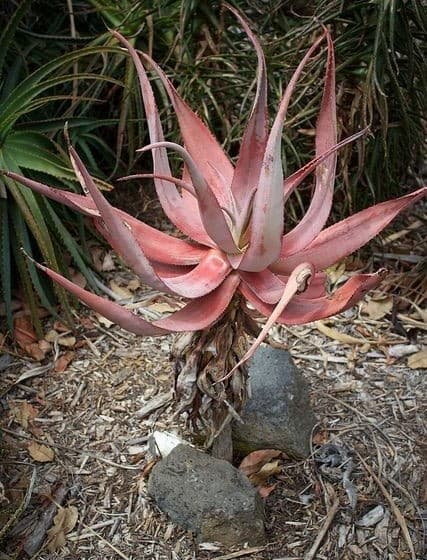
This one is considered as a tree aloe, reaching a height of at least 3-meters. It sprouts from a single, branchless trunk with striking dry, dead looking leaves forming a bearded look.
The leaves have reddish brownish red thorns and blooms yellow flowers all through summer.
9. Climbing Aloe (Aloe Ciliaris)

This fast-growing aloe, while thin, is actually very sturdy. It is well-loved for its tube-shaped flowers of red orange color and sporting yellow tips.
Its high ornamental value is notable. Butterflies, bees, and hummingbirds are drawn to its color.
10. Coral Aloe (Aloe Striata)
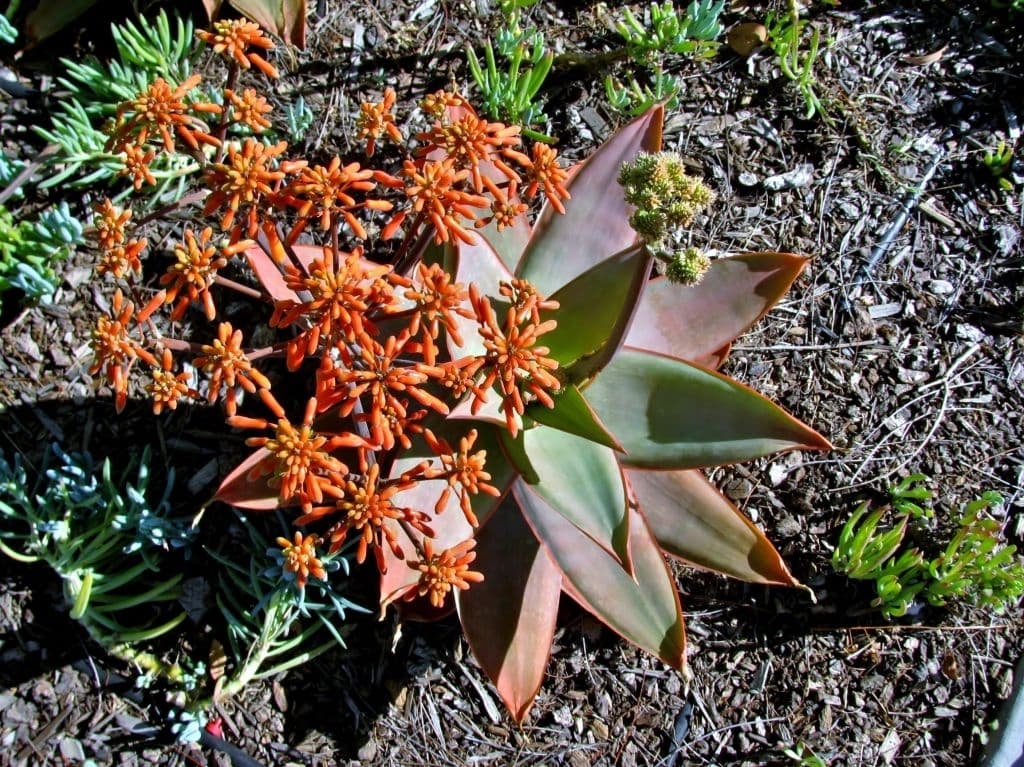
This tree aloe can grow up to 18ft in height and width. It features flat and broad leaves sporting grayish-green color. In full sun, the leaves turn into pink and in full shade, turns into purplish-blue.
It gets its name from its dense coral-colored flowers blooming from winter to spring. They can be used as border or accent plants but they are more popular as container plants.
11. Fan Aloe (Aloe Plicatilis)
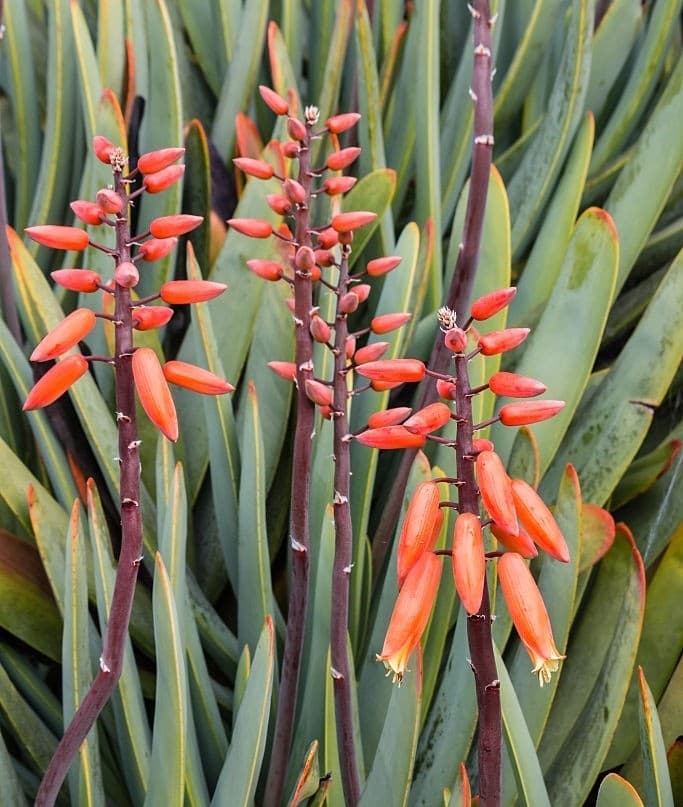
This one takes its name from its long and slender leaves which form into a fan-like shape. It is a striking winter or spring specimen plant with its blue grey leaves with bright orange tips as well as its red orange flowers.
This is an award-winning aloe because it is disease and deer resistant.
12. Gold Toothed Aloe (Aloe Nobilis)
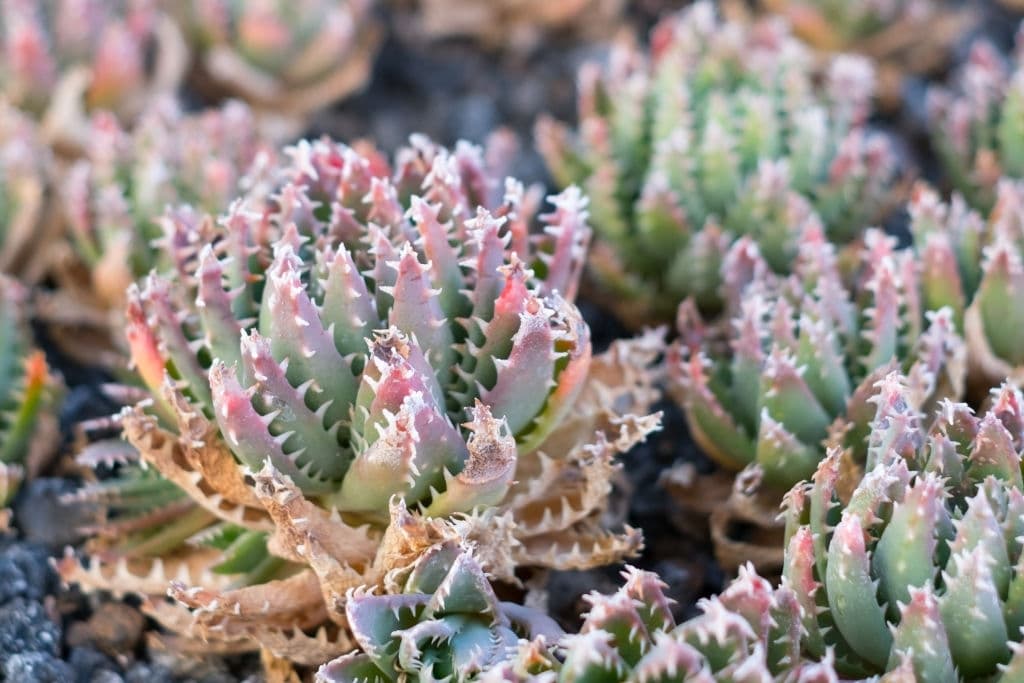
This rare aloe is indeed one for the books. For starters, it has very unique rose-tipped leaves and yellow spikes.
Forming into a rosette, they bloom red-orange flowers that are perfect for your winter garden. It is also a beautiful fit for succulent gardens. They thrive in full sun and grow to up to 12-inches.
13. Grass Aloe (Aloe albida)
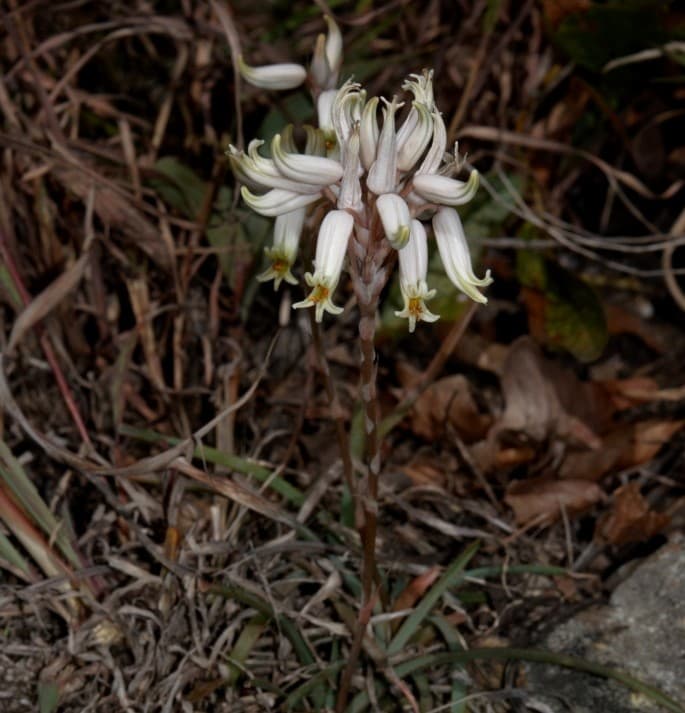
This is a tiny aloe plant thriving in grassy mountains, peeking from mossy rocks and often shrouded by grass, hence, the name. Its leaves still have the usual rosette form, sporting a gray green or blue green color.
The foliage also has a waxy surface and blooms tiny white flowers from late spring to mid-spring. This aloe plant prefers more shade than sun.
14. Kimberley’s Rock Aloe (Aloe inyangensis)
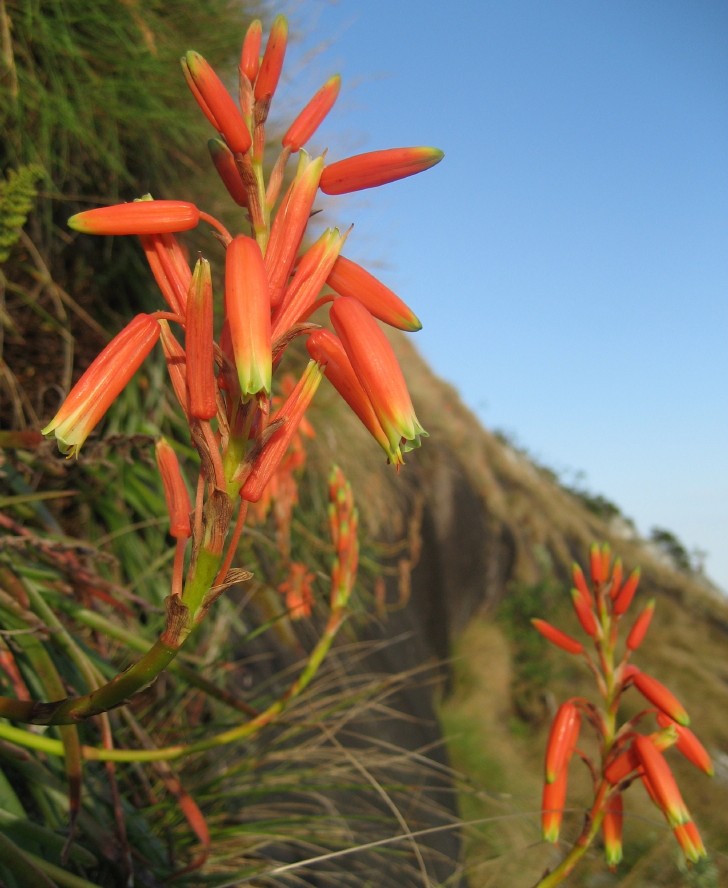
This one is another tiny aloe unique for its strap shaped leaves, curving forward from a central vein. The leaves are scarlet colored and it blooms tiny white or yellow flowers year-round.
15. Lace Aloe (Aloe Aristata)

This one is lined up in the list of rare aloe plants. As a cold climate aloe, it requires more shade and could tolerate near freezing point temperatures.
It is sometimes confused for the hawthorn plant because of their white bristles all over. They are globular in shape and strike dark green leaves. They are native to South Africa and grow up to 9-inches.
16. Malagasy Tree Aloe (Aloe Vaombe)
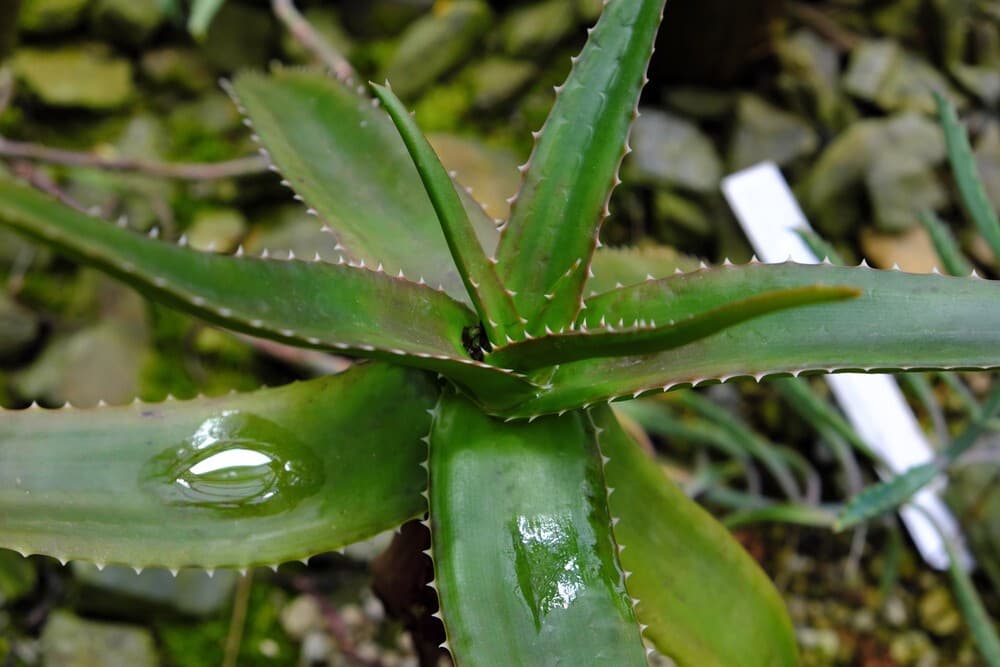
This aloe is unique because of tree form and not the usual rosette form of aloe plants. As the name implies, it is native to the Malagasy region of Madagascar and has become endemic upon its introduction in Arizona and New Zealand, among others.
They sturdy, drooping leaves that are toothed on the edges. They bloom long stalks of red flowers in the spring, attracting hummingbirds and butterflies.
17. Mountain Aloe (Aloe Marlothii)
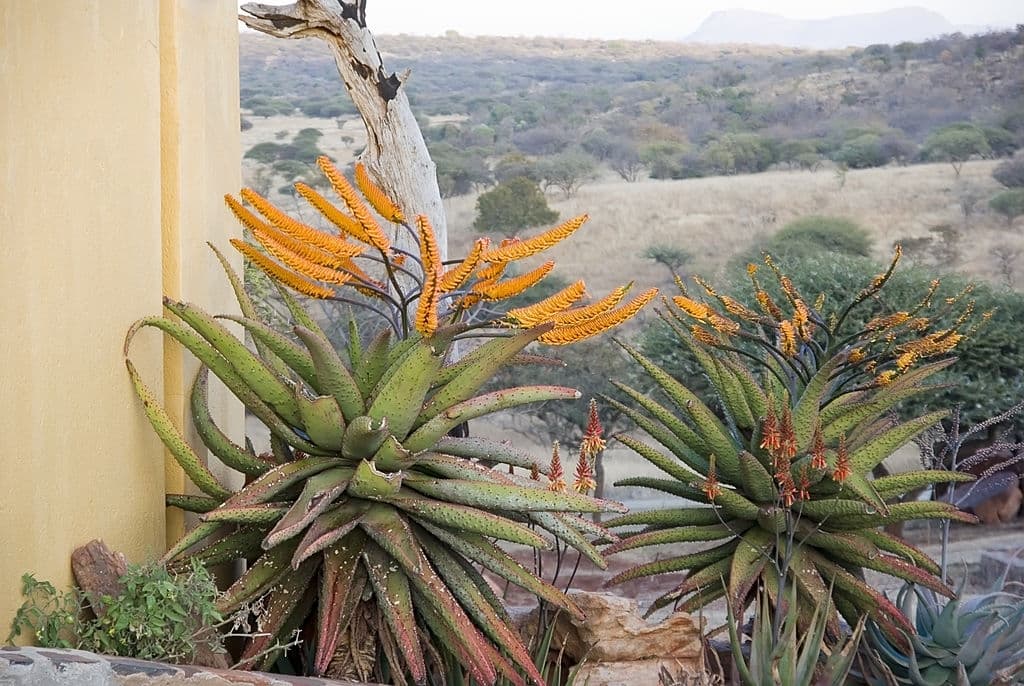
This one is a large type of aloe thriving in arid and dry conditions. It is unique because it follows the growth of some palm trees. Its stems shall be surrounded with leaves like palms but the spines on its leaves give its aloe identity away.
It blooms dense yellow and red flowers during winter, making it a standout specimen tree in your garden.
18. Prickly aloe (Aloe aculeata)

This aloe plant is the easiest to identify because unlike all aloe varieties, its spines sprout from a tuber like base. Its leaves grow at 2ft and the whole plant can be at 4ft maximum.
During winter, masses of bright pink flowers bloom. They are beautiful for raised beds and as indoor container plants.
Related: Propagating a Prickly Pear Cactus
19. Rat Aloe (Aloe ballyi)
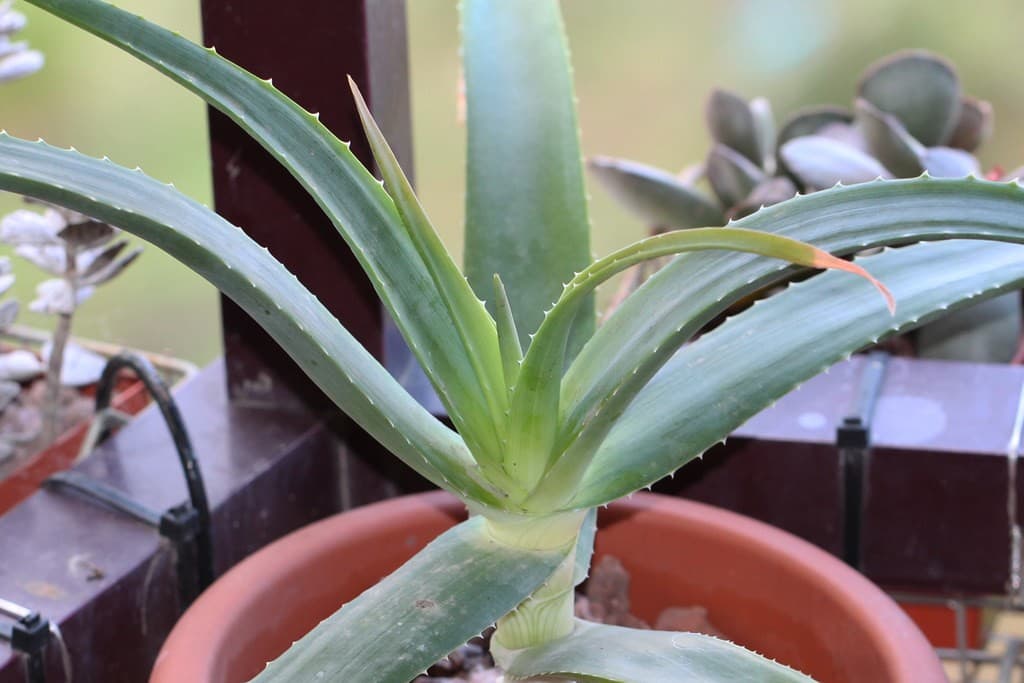
This one is one of the only three aloe plants that are considered poisonous. It is called as such because of its pungent smell, resonating rat odors.
While it is used as a laxative, a lot of people reported experiencing upset bowel, asthma and triggered allergies when it was used as home remedy. It grows to up to 8ft tall and is already considered poisonous in Africa.
20. Red Aloe (Aloe Cameronii)
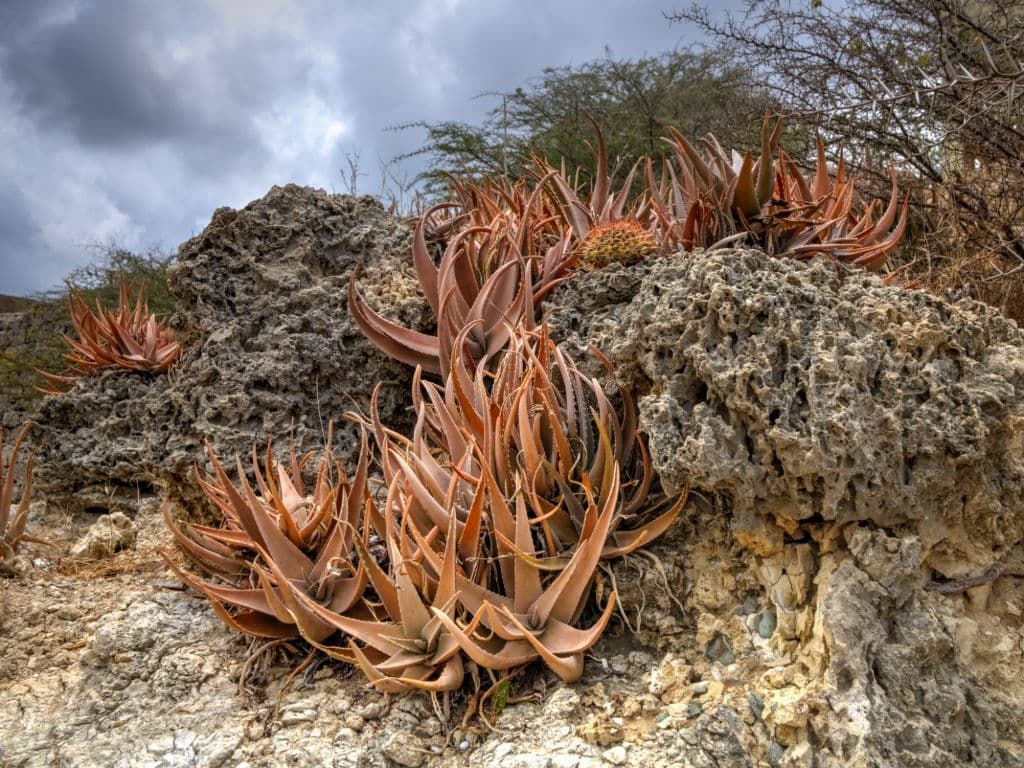
This rare aloe gets its name from its copper red leaves. They thrive in arid and drought conditions so they are sensitive to overwatering.
Interestingly, when they get too much water, they become green but when it is dry, they exhibit a bright red color. It is native to South Africa and grows at a maximum height of 24-inches. They bloom like daisy-hibiscus flowers in the summer.
21. Sand Aloe (Aloe hereroensis)

This one is also called the chameleon aloe because the color of its leaves change depending on the amount of sunlight they get. As such, the leaf colors can range from silvery green to pale green when it receives more light and turns pinkish in shade.
It has extra sharp spines and teeth so make sure that you have gloves when tending them. This one is a sturdy aloe and can survive temperatures not lower than 25C.
22. Short Leaf Aloe (Aloe Brevifolia)
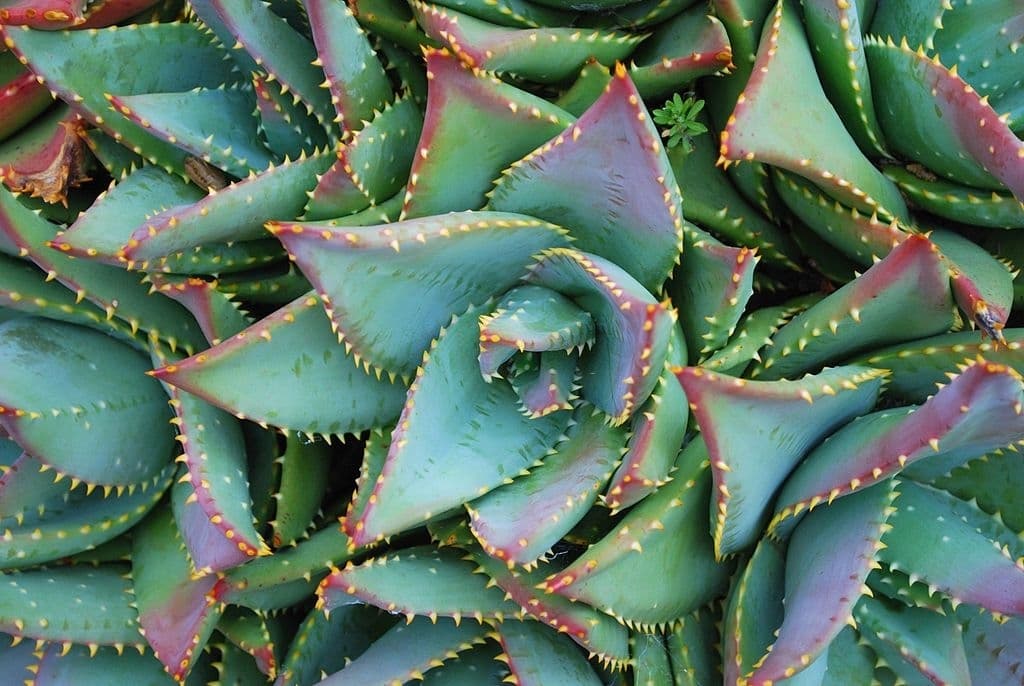
If you live within regions with temperatures that do not go lower than 25C, this aloe is one of the most beautiful choices for your garden. Its upside is its drought tolerance.
Just growing at 4-inches in maximum, it makes a good ground cover for gardens. It sports grey-green leaves, with streaks of orange all over. It blooms orange flowers from fall to winter.
23. Snake Aloe (Aloe broomii)
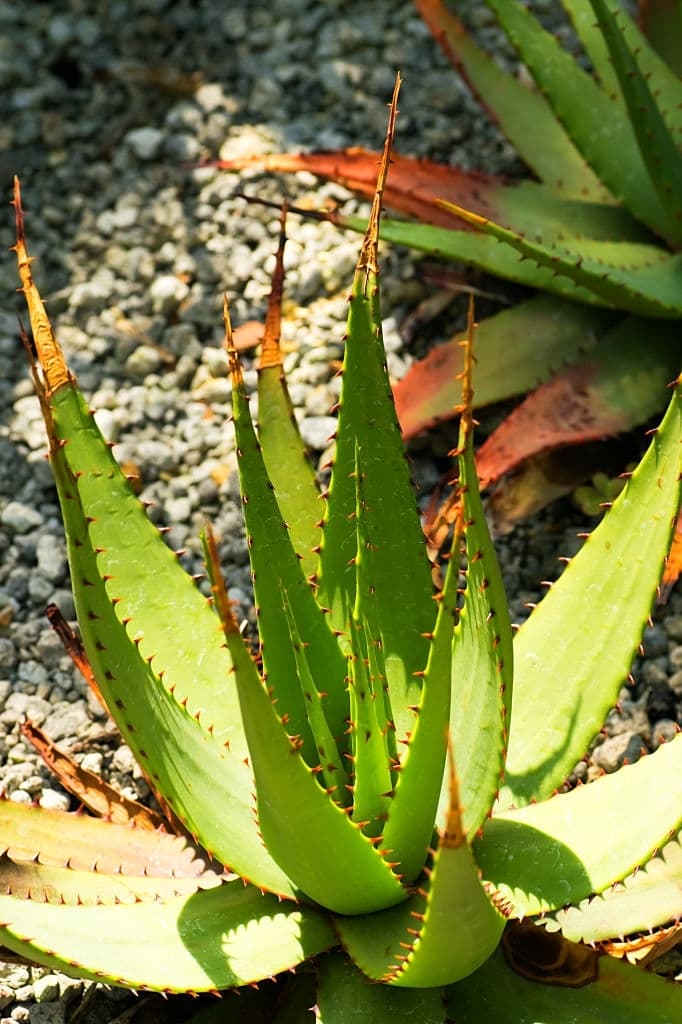
This one is not just called as such because of its long, toothed, serpentine leaves. The leaves are stiff and spiky and they are unique for their unique, globular flowers.
They thrive in warm and dry regions, and as such, are often called the mountain aloe too. It grows to up to 36-inches so it can work as a sturdy border plant in a summer garden.
24. Soap Aloe (Aloe Maculata)
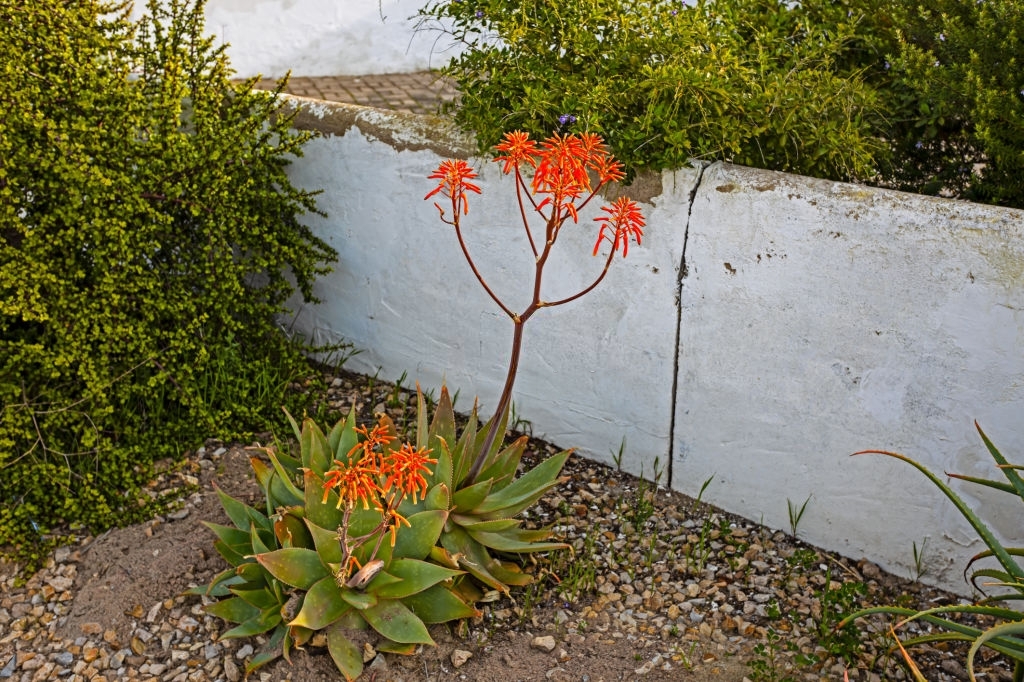
When it comes to spikes, this one is said to rival cacti but like them can thrive even in neglect. It is a South Africa native and it gets its name from the fact that its gel is extracted to make soap.
They are slow growing aloes that do not require cutting. As a matter of fact, the more you cut the leaves, the more disorderly the leaves become.
25. Spiral Aloe (Aloe Polyphylla)
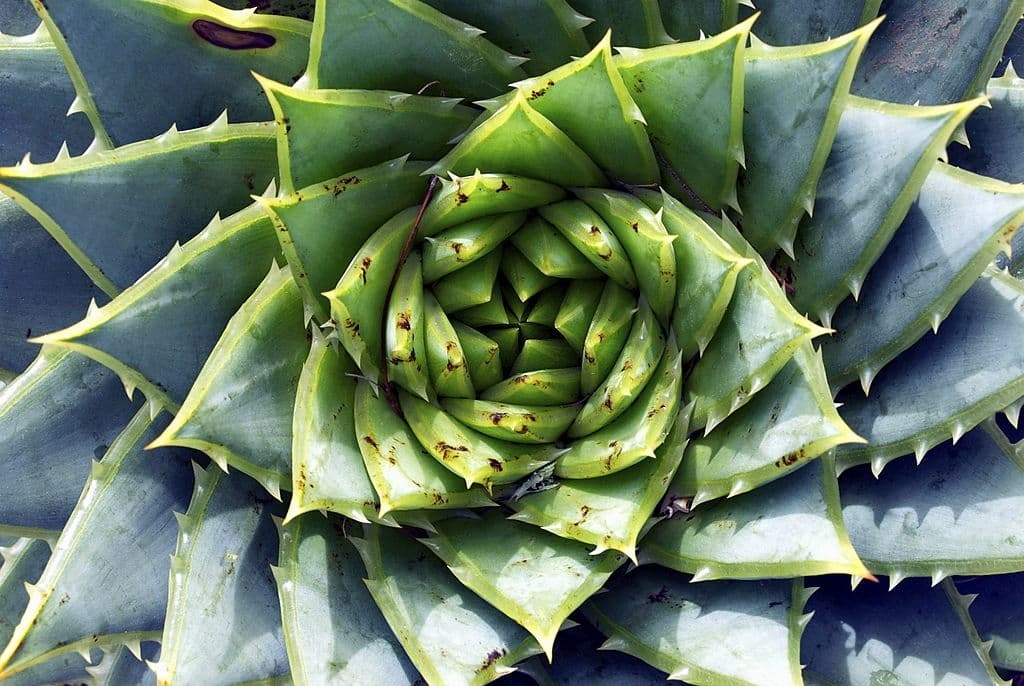
As the name suggests, this rare aloe sports a spiral shape and not your usual rosette shape. Its rosettes are gapped at 1-2ft across and its maximum height is just 1ft.
It sports bright green leaves with tinges of yellow. This one is a beautiful specimen aloe which you can incorporate in any garden type.
26. Sunset Aloe (Aloe Dorotheae)

Known for its orange and salmon leaves, this one is a rare and vibrant aloe cultivar that is perfect as border plant along rock gardens or as container plants for the patio and deck.
It blooms striking, orange flowers with greenish tips during winter, and grows at a height of 12-inches. However, they are now considered endangered in South Africa.
27. Tiger Tooth Aloe (Aloe Juvenna)

This one gets its name from its toothed protrusions combined with soft spikes. This one thrives better in partial to full shun but it could also be planted in climates with temperatures that do not fall below 19C.
They are propagated through offsets. Its bright green impact in the garden is notable. In full sun, the color turns to reddish brown.
28. Tilt-Head Aloe (Aloe speciosa)
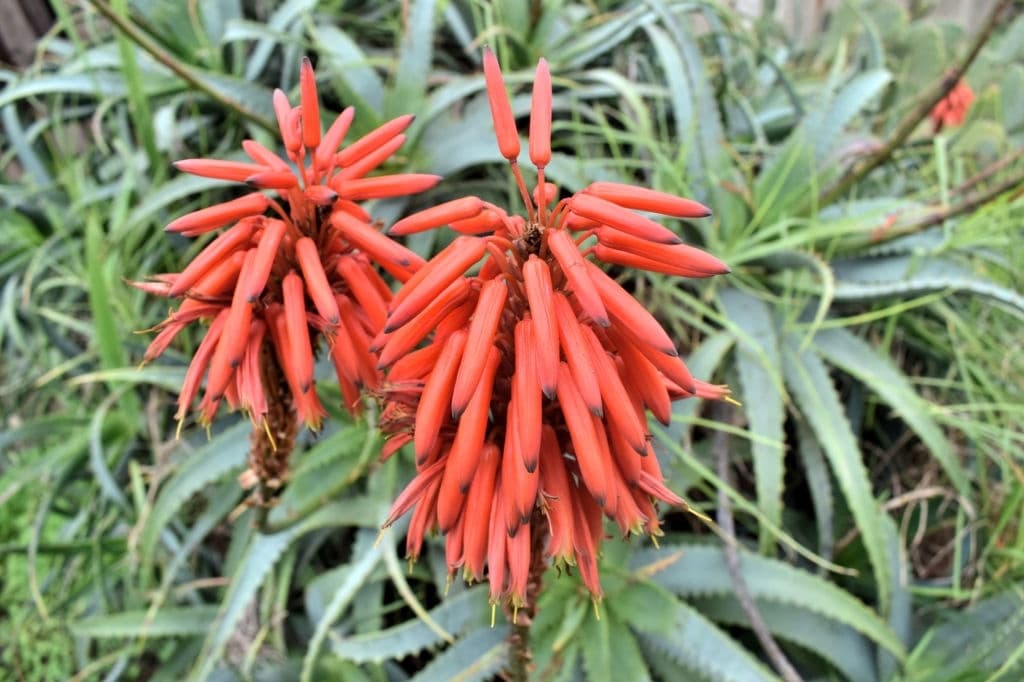
This is another specimen aloe featuring blue green leaves with pink tips. It has large, spiky leaves, growing to up to 3ft.
Its spikes are also multicolored as they come in deep red, cream, yellow, and brownish red. The whole plant can grow to up to 10ft and are well-loved by hummingbirds.
29. Torch Aloe (Aloe Arborescens)

This one is also called the Krantz aloe. Here is another ornamental aloe that you should know of. Its leaves are sword shaped with spikes that become red orange come winter.
It also blooms multicolored flowers in spring and winter. It tends to grow on a shrubby habit at 10ft in height and width. It is perfect as an accent, border, and container plant.
30. Tree Aloe (Aloe Barberae)
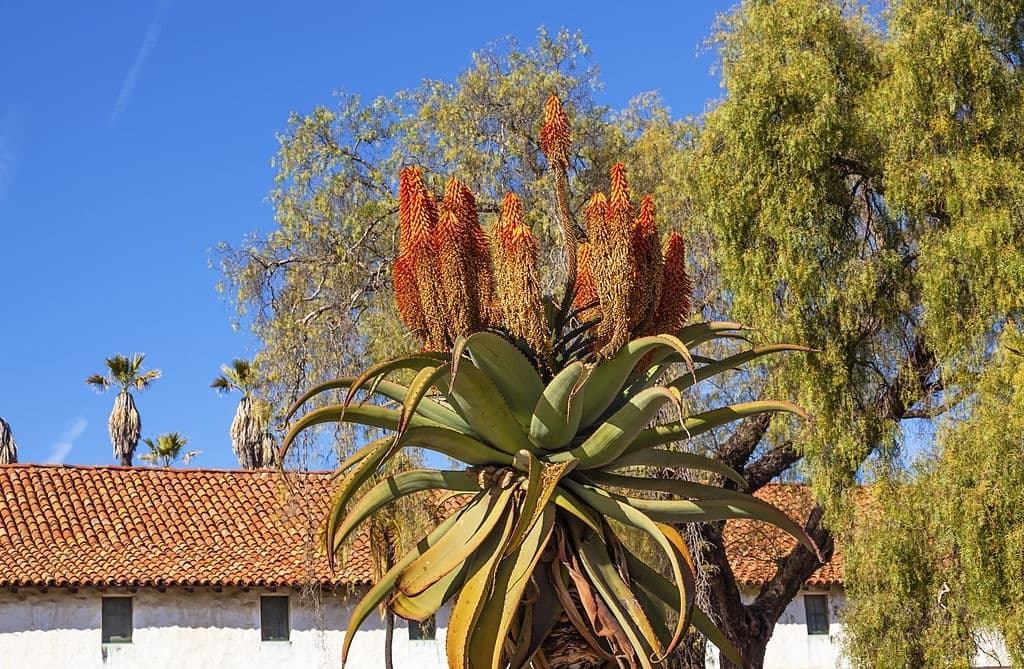
If you are looking for an aloe plant that is tall enough as specimen trees for gardens and pool sides, the tree aloe is a good choice.
It grows tall to 30ft with dense, drooping rosettes and upright, pinkish-red flowers blooming during winter. They are native to South Africa and thrive best in warmer locations.
31. Van Balen’s Aloe (Aloe vanbalenii)
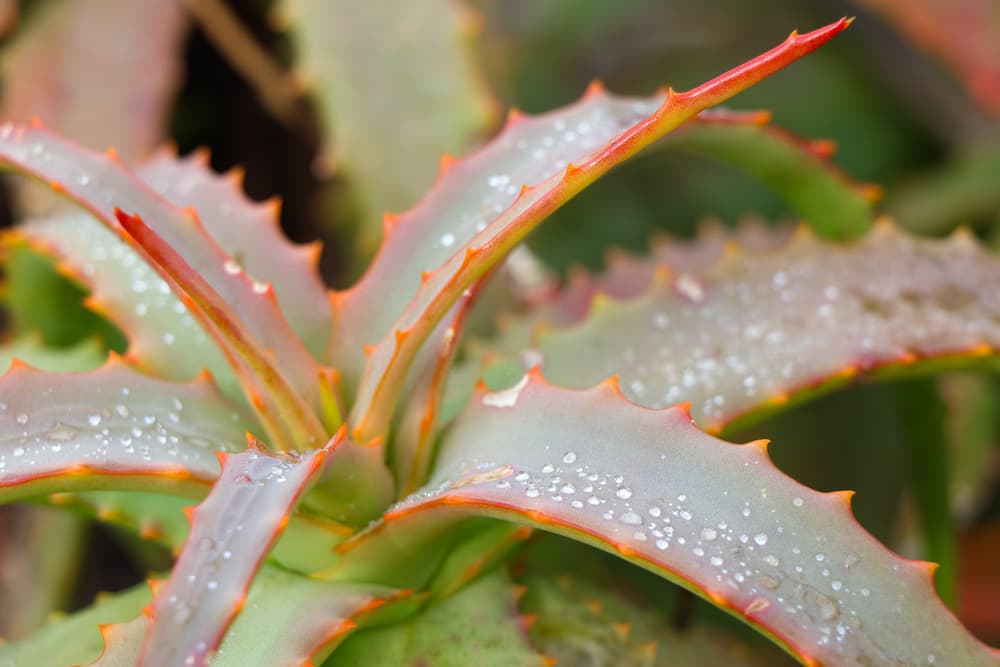
This one has a striking octopus-like form, with its long, curvy leaves that look like tentacles. It is a unique aloe plant because it turns red when it is exposed to much sunlight. But the most striking characteristic of this aloe plant is its spicy scent when the leaves are crushed. They are usually planted in conservatories but also fare well as landscape plants.
Plants that look like aloes but aren’t
Like all other plants and trees, there are also notable aloe vera lookalikes that you should know of. On the top list would be the agave, gasteria and the haworthia plants.
1. Agave

This one is the most comparable with aloe because they sport the same triangular leaves. However, it is larger than aloes and its leaves do not contain a gel substance like aloes do.
It instead has a fibrous leaf interior and minimal nectar at the leaf base when snapped. Its spikes are also larger and are very sharp.
2. Gasteria
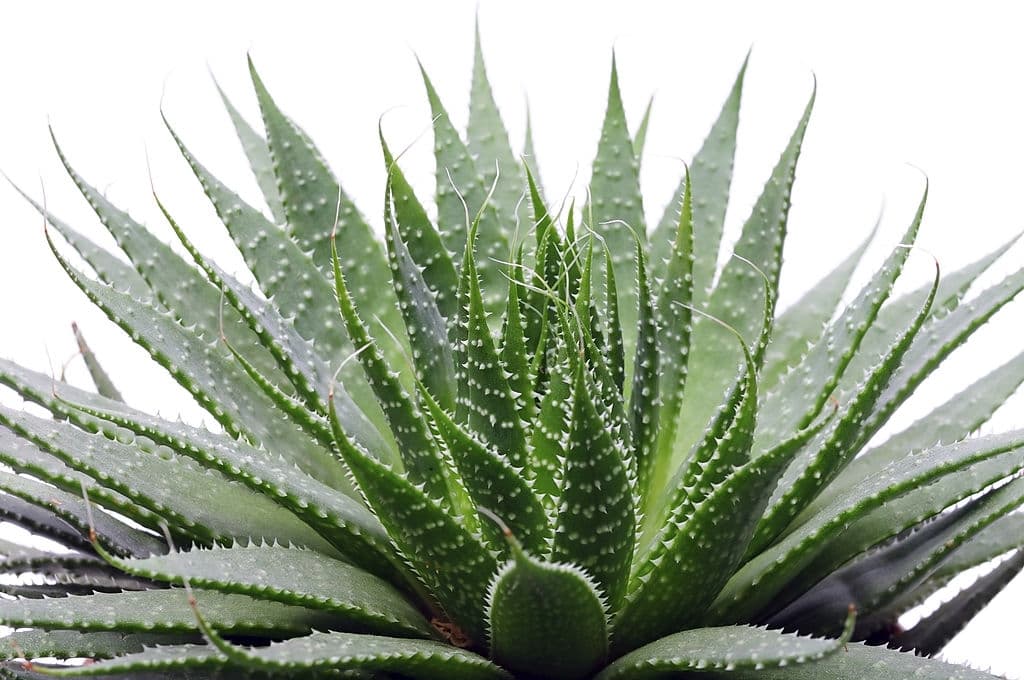
This beautiful succulent also features fleshy and thick leaves that is why it is considered as an aloe look alike.
The defining features, however, would be its rounded leaves white speckles on the leaf surface and white stripes on its lining. Its leaves also do not have spikes.
3. Haworthia

This slow-growing succulent is also often mistaken for aloes because of its small size even at adulthood.
Aside from their rosette form, and long, lancing leaves, there is nothing else that would make it similar with aloes. It is also unique for its smooth surface so it is easy to differentiate it from aloe or agave.
Related: 26 Types Of Cactus For Your Garden (With Pictures) – Indoor, Outdoor
Aloe Vera Growing Tips
Aloe Vera Plant: Growing Tips & Medicinal Value
Aloe vera benefits
Aloe vera is not a popular aloe plant for nothing. It is the leading aloe plant used for organic food supplements, herbal medicines, and for shampoo, soap, skin care products as well as cosmetics.
Here are some of the most notable aloe vera benefits that affirm why it is a sought-after aloe plant.
1. Digestive cleansing
Aloe vera is considered a laxative thanks to its aloin content. This substance has anthraquinone which helps in bowel movement and metabolism.
As such, aloe vera is processed into capsules to treat chronic bowel conditions and as home remedy to constipation or diarrhea.
2. Treating skin conditions
This one is a wide held aloe vera benefit. Aside from its natural hydrating effect to the skin, its anti-inflammatory content is also perfect in treating wounds, burns, acne, psoriasis, skin itchiness and irritation.
It also has antioxidants that help in naturally maintaining skin’s youthful stretch and glow.
3. Relieving heartburn
In a research done by the Journal of Traditional Chinese Medicine, it was found out that the anti-inflammatory content of aloe vera syrup makes it a potent remedy for GERD as it inhibits vomiting, belching, and heartburn.
4. Lowers blood sugar
Trials for diabetes 2 treatment revealed that drinking two tablespoons of aloe vera juice everyday for 14 days can significantly lower blood sugar. Specifically, the triglyceride levels of people with Type 2 diabetes improved. High triglyceride is a risk factor for heart disease and cholesterol abnormalities.
5. Prevents breast cancer
Another research in alternative medicine revealed that the antioxidants and anti-inflammatory content of aloe vera are also potent in preventing the onset of breast cancer. Although further studies are still recommended to establish this, it is a promising aloe vera benefit.
FAQs
Which type of aloe vera is poisonous?
With more than 50 species and a reputation associated with herbal medicine, and the hygiene and cosmetic industry, it would be shocking to know that there are also poisonous species of aloe vera. These species would be the Aloe ballyi, Aloe elata, and Aloe ruspoliana.
Reports suggest that the use, especially ingestion of these three could trigger anaphylactic shock, asthma, and allergies. Fortunately, the ballyi and the elata are very rare. Nonetheless, you still have to know which is which for safety purposes.
Which type of aloe plant is good for the skin?
Of all aloe plants, aloe vera is considered as the aloe plant that is best for the skin. This is very much supported by the range of skin care products, soaps, and cosmetics using aloe vera extract as their main ingredient.
The reason for this is its high Vitamin A, C, and antioxidant content. These essential vitamins and minerals are proven to have an effect in treating skin burns, acne, and dry skin. They also have an anti-inflammatory effect.
Conclusion
With everything that we have covered here, we have affirmed that aloe plants are more than just their medicinal properties.
While this alone makes aloe plants a striking plant family on their own, their ornamental value, sturdiness, and sheer beauty are also noteworthy characteristics, making it a viable option for gardens and for container plants.
Since they are also easy to propagate and easy to maintain, there should be no question as to whether they should make it in your garden. Now that you have various aloe plant options to choose from as provided for in this list, it is time to hit that store and buy one.

